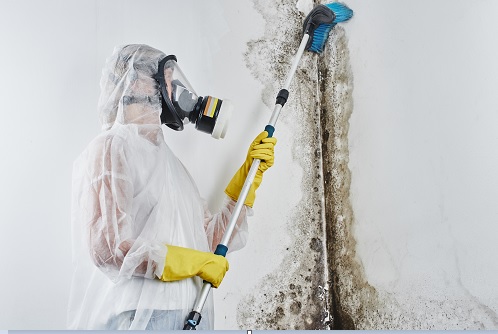Mold and rot can be serious problems in homes and buildings. Whether caused by excess moisture, leaks, or poor ventilation, mold and rot can damage structures, degrade air quality, and even lead to health problems. Understanding how to remove these nuisances efficiently is key to maintaining a safe and healthy environment. In this guide, we’ll cover how to deal with Rotten and Mold Removal, mold growth, and preventative measures to keep your home safe from further damage.
Understanding the Problem: Mold and Rot
- Mold: Mold is a type of fungus that thrives in damp, warm, and humid environments. It typically appears as black, green, or white spots and can be found on surfaces such as wood, drywall, and carpets. Mold spreads rapidly if not dealt with properly.
- Rot: Rot is the decaying of organic materials like wood, often caused by prolonged exposure to moisture. Fungal rot, such as dry rot or wet rot, is most common in wood structures like beams, floors, and furniture. This decomposition weakens the material and can compromise the structural integrity of buildings.
Step-by-Step Guide to Mold and Rot Removal
Before you can begin the removal process, it’s essential to locate the source of the mold or rot. Signs to look out for include:
- Mold: Visible mold growth on walls, ceilings, or floors, particularly in damp areas like basements, bathrooms, or attics.
- Rot: Soft, spongy wood or wood that crumbles when touched, often accompanied by a musty odor.
Once the affected areas are identified, it’s time to assess the severity of the damage. If the mold or rot is extensive, it may be best to call in professionals.
Safety First
When dealing with mold or rot, it’s crucial to protect yourself from exposure. Follow these safety steps:
- Wear protective gloves, goggles, and a N95 respirator mask to avoid inhaling spores or handling harmful materials.
- Ensure the area is well-ventilated by opening windows or using fans to circulate air.
- Use protective clothing that you can easily dispose of or wash after cleaning.
Mold Removal
For small areas of mold growth, follow these steps:
- Prepare a cleaning solution: Mix one cup of bleach with one gallon of water, or use a store-bought mold cleaner.
- Scrub the surface: Apply the solution to the moldy surface using a sponge or brush. Scrub the affected area to remove visible mold.
- Dry the area: After cleaning, dry the area completely using a clean towel or fan. Mold thrives in damp conditions, so moisture control is critical.
If mold has penetrated porous materials like drywall or insulation, you may need to replace the material, as cleaning may not fully remove the spores.
- Cut out and replace affected drywall or insulation.
- For larger areas of mold growth, it’s best to contact a mold remediation professional to ensure thorough removal.
Rot Removal
For wood that has started to rot, the first step is to examine the extent of the damage. If the rot is contained to a small section, you can cut out the affected area and replace it.
If the rot is caught early, you may be able to salvage the wood by treating it with wood hardeners. These products penetrate the wood, strengthening it and preventing further decay.
If the rot is widespread or has compromised the structure, replacing the wood may be necessary. For floors, beams, or other load-bearing structures, professional assistance may be needed to ensure proper removal and replacement.
Preventing Future Mold and Rot
Once you've dealt with the immediate problem, it’s essential to address the root causes to prevent Rotten and Mold Removal Puyallup WA and rot from returning.
Mold and rot thrive in damp conditions. Ensure your home is well-ventilated by:
- Installing exhaust fans in high-moisture areas like bathrooms and kitchens.
- Opening windows regularly to allow fresh air circulation.
- Using a dehumidifier in basements, attics, and other humid areas.
Any leaks, whether in the roof, walls, or plumbing, provide a constant source of moisture that encourages mold growth and wood rot. Make sure to fix all leaks promptly.
Keep the indoor humidity level below 60%. You can use a humidistat to monitor humidity levels in your home and adjust the air conditioner or dehumidifier as necessary.
Ensure your gutters and downspouts are clear of debris to prevent water from overflowing and pooling around your home’s foundation. Water accumulation can lead to leaks and excessive moisture, which promotes mold and rot.
Consider using mold-resistant paint and materials in areas that are prone to moisture, such as bathrooms, kitchens, and basements. This can help slow the growth of mold in the future.

